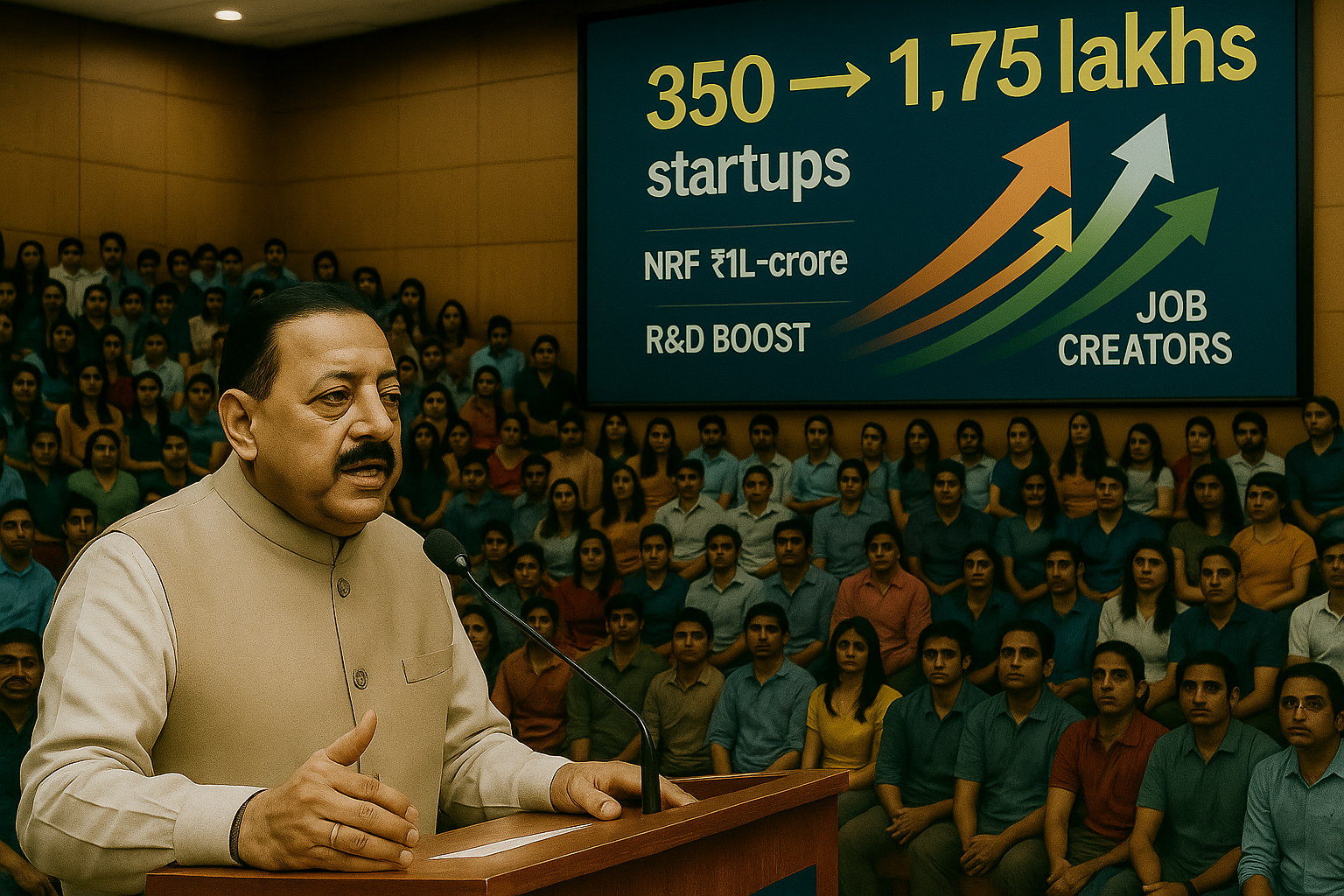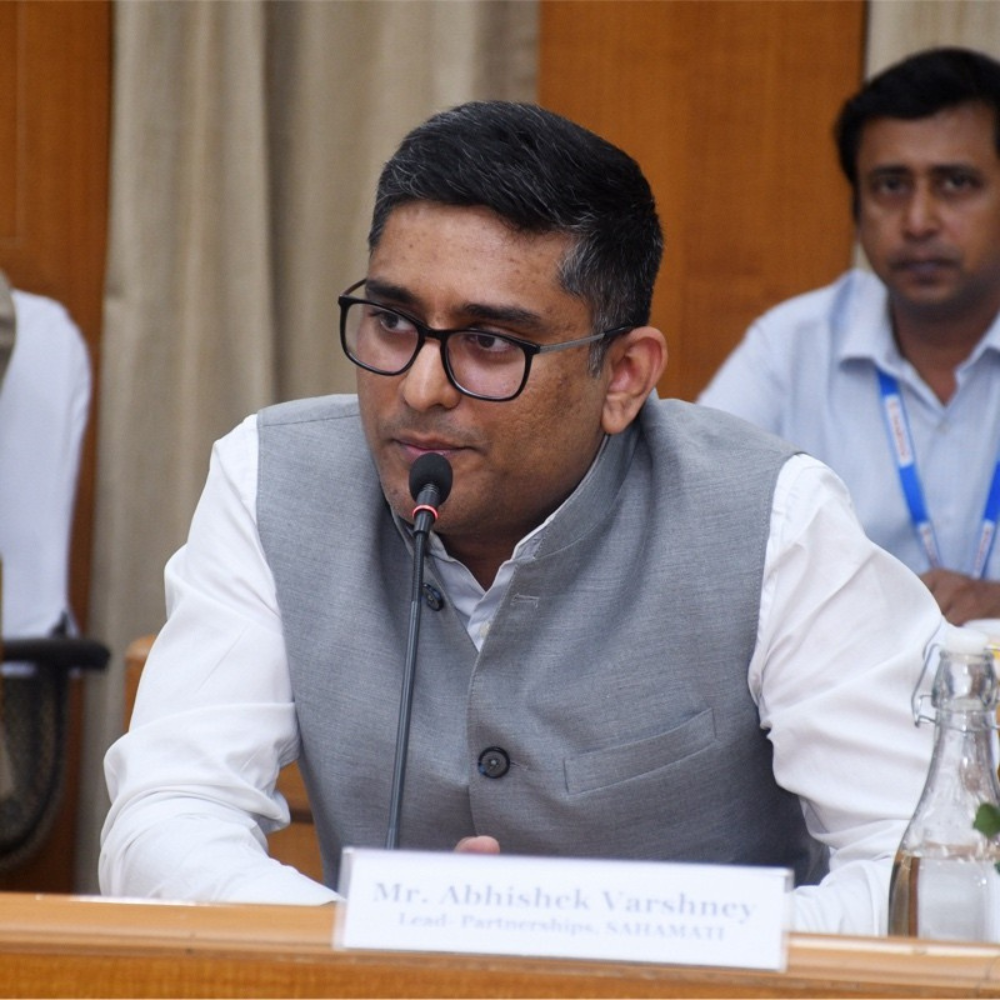Union Minister Jitendra Singh has highlighted a transformational boom in India’s startup ecosystem over the past decade—from a mere 350 startups to nearly 1.75 lakh, generating 17.56 lakh jobs. Speaking at IIM and IIT campuses in Jammu, he urged students to shift from seeking jobs to creating them, buoyed by new research and innovation policies.
NewsBytes
Startups grew from 350 (circa 2015) to ~175,000 today → 17.56 lakh jobs
Students urged to transition from job seekers to job creators
₹1 lakh crore National Research Foundation (NRF) launched to drive R&D
VCs can now approve global tenders up to ₹200 crore directly
1,600+ regulatory rules scrapped to streamline research procurement
(Source: NDTV Profit, Economic Times via PTI)
Background and Context
India’s innovation trajectory is supported by sweeping reforms: the National Research Foundation (NRF) has launched with ₹1 lakh crore to incentivize private R&D, while procurement has been accelerated with a ₹200 crore tender approval powers and over 1,600 obsolete rules removed. The result: 56% of patent applications are now Indian-made, the Global Innovation Index rank has risen from 81 to 39, and India sits 4th globally in scientific publication output . Major scientific achievements—like Chandrayaan and Gaganyaan—underscore this momentum.
Expert Insights & Industry Perspective
A Startup Surge Fueled by Reform
“From just 350 startups a decade ago, India now has over 1.75 lakh startups—creating 17.56 lakh jobs, more than many government recruitment initiatives,” said Singh.
Students as Entrepreneurial Agents
Singh also added:
“We urge students to shift their mindset from being job seekers to becoming job creators, leveraging the enormous support available through various startup schemes.”
Broader Implications
1. Knowledge-Led Economic Growth
Empowering students as innovators can unlock solutions and strengthen the startup pipeline in deep tech, life sciences, climate, and beyond.
2. Research & Academia Explosion
With better funding and faster procurement, Indian universities and institutions—especially IIMs and IITs—can more rapidly translate innovation into impact.
3. Regulatory Enablement
Streamlined rules and empowered leadership pave the way for agile, responsive scientific hubs and research-driven startup clusters.
Challenges & Risks
Bridging Mindset Gaps: Educational institutions must embed entrepreneurial thinking, not just technical training.
Implementation Risks: NRF and tender reforms must be executed equitably and transparently, especially in premier institutes.
Supporting Ecosystem: Access to mentorship, early-stage funding, and market linkages remains imperative for real-world impact.
What Lies Ahead
| Next Goals | Projected Impact |
|---|---|
| Launch NRF-funded research and commercialization | Fuel breakthroughs and global IP generation |
| Institutionalize entrepreneurship in campuses | Build talent pipelines for founder-led ventures |
| Monitor innovation metrics (patents, publications) | Track and enhance India’s global research standing |
Conclusion
India’s rise from 350 to nearly 175,000 startups in 10 years reflects a national pivot toward innovation. With bold policy steps—like the ₹1 lakh crore NRF, streamlined procurement, and regulatory reforms under Singh’s leadership—the focus has shifted toward empowering the next generation of job creators. The seeds sown in campuses today could propel India toward leading the knowledge-driven economy of tomorrow.












